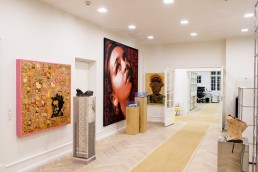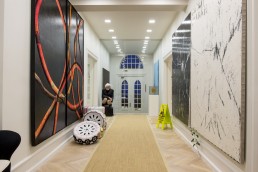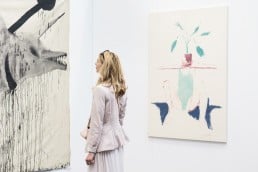The Drive to Collect
By Peter Letzelter-Smith
The psychology of collecting art is complex. Is a collector driven by a pure love of art, by a true spiritual connection with a particular creation of an artist? Or is it conspicuous consumption, the primal urge to display one’s wealth and power for others to see? Where does an individual collector fall on that spectrum of motivation?
Not surprisingly, formal studies find that the art market is driven by a wide variety of psychological and social forces. And pure reason is rarely in the driver’s seat. But, then again, art is not the realm of pure reason.

There are a number of psychological theories to explain the urge to collect. Building collections is a passion that has marked many cultures and touched many lives.
The endowment effect — which also goes by divestiture aversion — posits that the act of owning an item makes it more valued by the possessor. This sense of increasing value by gaining possession, once experienced, motivates the desire to continue building up one’s collection.
A concept from evolutionary theory — signaling — is that collecting is a primal device for attracting potential mates; that the accumulation of wealth symbols is a mechanism with which to display prowess and proficiency.
Psychoanalytical theories include collecting as a substitute for emotional support that was lacking during childhood and as an existential device to extend one’s identity into the future.
Art collecting can also be seen as a quest, as a never-ending pursuit for beauty and grace, something that brings a sense of purpose to life. The Holy Grail of Arthurian legend was, after all, ultimately a collectible.

Collecting can be experienced as a way to bring order to a complex world. The building of a carefully chosen collection can create a zone of self-selected stability and familiarity, a “happy” place where anxieties can be retreated from, where one can feel whole.
One of the world’s greatest art collectors ever, Augustus Wollaston Franks, who spent 45 years — almost the entirety of the last half of the 19th century — building the collection of the British Museum stated very simply: “Collecting is a hereditary disease and as such I am incurable.” The art of the hunt is definitely a motivation for many a serious art collector. Numerous high-end collectors admit to the competitiveness inherent in pursuing their passion. The “high” of winning a coveted item at auction is not soon forgotten. Continuing to pursue this feeling is hard to resist.
Auctions are designed to heighten drama and force quick decisions in a public, competitive environment — auctioneers do, after all, work for the sellers, not the buyers. For some art collectors, the auction is like visiting the casino, part adrenaline rush and part performance art, and is its own reward.
In contrast, the social aspects and time commitment of attending an art fair make it hard for many to return home without having added to their collection. There’s a gentler drive to feel like the experience was fully lived, that one contributed to the collective cause by supporting artists through the purchase of their works. It’s perhaps a less individualistic and more communal aspect of collecting art.
Likewise, if attending gallery openings and other art-related events is an important part of someone’s social life, then bringing physical manifestations of their community into their home is a strong motivating factor.

Given the psychological complexities inherent in art collecting, it’s probably a good idea to get a trusted second opinion. Cultivating a relationship with an appraiser or other professional — a trusted confidant whose job is to not be emotional about purchasing decisions — and who can concentrate on the rational end of the purchasing spectrum might be wise.
But ultimately, collecting art is about touching — and, perhaps, even possessing briefly — a bit of the transcendent that a brilliant work of art is. As the Turkish novelist Orhan Pamuk puts it in his novel The Museum of Innocence, which in part explores the urge to collect: “In poetically well built museums, formed from the heart’s compulsions, we are consoled not by finding in them old objects that we love, but by losing all sense of Time.”

Get your free copy of Artland Magazine
More than 60 pages interviews with insightful collectors.